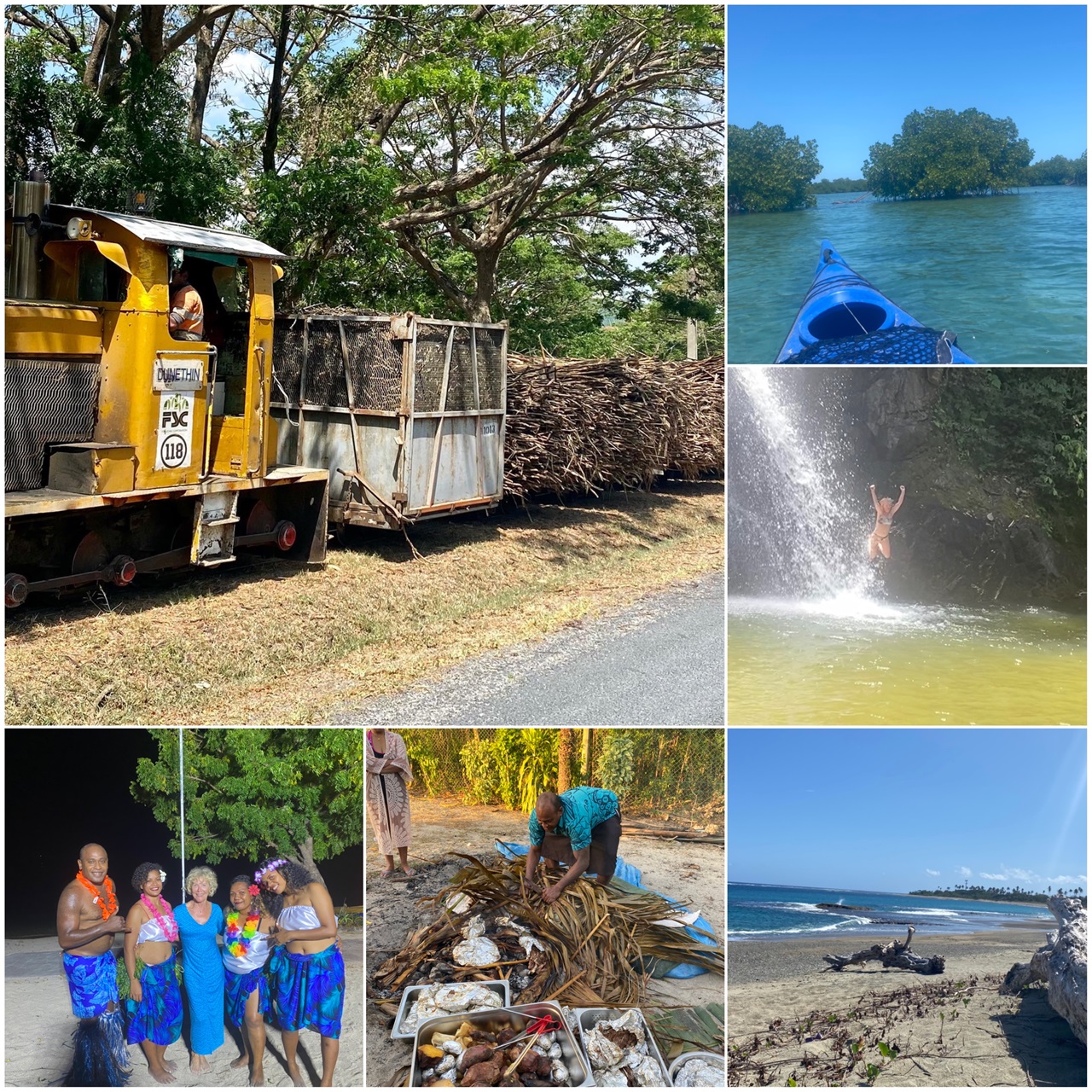Oct. 2, 2022
Fiji. Viti Levu Island and some more…
Fiji-islands of smiling people
Republic Fiji is a country in the South Pacific. It is an archipelago of around 300 islands, the
biggest one named Viti Levu with the capital city Suva. Most of the islands are uninhabited.
The island was settled first by Austronesian people followed by people coming from
Melanesia (the Philippines and Mariana Island). It was a British colony since 1874 until 1970. At the beginning of the 20th century, many Indians were transported to Fiji as slave labour. Today 80% of inhabitants are indigenous Fijians. They still live in clans, which held their land as collective ownership. Their main export product is sugar cane and drinking water, which was a big surprise for me.
I visited Fiji only for one week which is much less than I would like to get to know
the country better. Many people asked me what is the difference between French Polynesia and Fiji.
At a first glance, the Islands are similar. Beautiful nature, blue sea with white sand beaches for all kinds of water activity and in the inner land still enough green parts for walking tours. But for sure Fiji is touristically less developed than FP islands. A man I was talking with said, that their development is too slow and that they are 30 years behind others Polynesian Islands. Yes, they are less developed but my opinion is, that that might not be so bad. And again. Like all the people in Polynesia, Fijians are VERY friendly, on every step, you can see their bright smiles and BULA ( Hello!).
As you know, I am not the kind of tourist that comes to a resort, stays there all the time, maybe makes some boat trips and goes home happy. I like to get to know the real life of people, their way of thinking, their eating, dressing …..culture, their heritage Mostly, I find it difficult as all tourist agencies provide tours for classic tourists. This time I managed to get a guide who went with me to trek on the second highest mountain in Fiji Mt. Koroyanitu with 1195 hight.
The route starts in a village in the inner part of the island. The road to the village is bad and in some parts flooded by the river. The village is organised as many, I am not sure if all, by the principle of common land, all doing for everyone. I had to pay for the entrance, the guide, and the lunch. 120 people live in the village, they produce the food they need, vegetables and fruits. They have cows and goats for meat and horses for hunting wild swine. And of course, they fish. Some inhabitants of the village work in town so they bring additional money. They don’t have electricity except for some sun collectors only for lighting. No radio, no television. The children are in school during the week in the town and come home only on weekends. And they looked happy!!!! They made me a perfect lunch, a kind of spinach with coconut milk, rice, a kind of spaghetti with vegetables, and eggplants filled with some other vegetables. All really delicious. The lunch was prepared on the floor and I ate together with my guide, his auntie, and his son. I felt great.
Other days were filled with other activities. I went on a trip to Nadi (one of the larger towns)
heritages, tried mud water pools, visited orchids park, did some snorkeling and kayaking
among mangroves, swam in natural sweet water pools under waterfalls.
In the hotel they prepared a Fijian night. The main attraction for us was preparing the food in the traditional way by cooking it in an underground oven. It is called LOVO night. They dug a big hole in the soil, made a fire, and put stones on it. Meat and vegetable were wrapped in paper and put on hot stones. They added 4 different types of root vegetables such as potato, white one, sweet potato, manioca called cassava, and taro. They covered all with palm leaves for five hours, and the dinner could start. The desert was of course made with coconut. They showed us traditional dancing. And at the end, they sang a goodbye song. VINAKA VAKALEVU (thank you very much).
I must not forget, that on the first day when I was still tired of traveling, the hotel employees
took me with them to the city of Lautoka to the market for buying things for snacks, and fruits. They were very kind and I felt relaxed among them. In the evening they showed us how they prepare their kava drink. Kava is a plant native to the Pacific Islands. The drink is made from the roots. They are sun-dried and ground down to a fine powder. They put it in a cotton cloth and pour it over with cold water. They say that it helps with relaxation and good sleeping. I didn’t like the taste of it, but for sure I slept well. I was tired, indeed.
Fiji under the line:
- country of kind and smiling people
- traditional way of living; lovo, kava, dance
- country of beautiful nature,
- country of sugar cane, transporting on narrow gauge railway
- less developed tourism than in French Polynesia
- obey their rules of living if you enter their village
- Roads are bad, but they are building them. If you are not used to driving on the left side, better take a taxi than a rental car.
So, VINAKA dear Fijian people, and maybe BULA one day!

